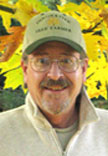
Climate Isn't Responsible For Everything

World Climate Report is World's Longest Running Climate Change Blog.
http://www.worldclimatereport.com
Much to the credit of its producers, WCR is an amazing source of excellent information on climate science. I highly recommend it. As a professional forester, forest biometrician, and forest historian, I am particularly interested in WCR articles related to forests, of which there are a goodly number.
There are many sub-issues that relate climate to forests, one of which is: how does climate change affect forest fires? Two articles at WCR on that topic are: Raining on Boreal Forest Fires, June 14, 2010,
http://www.worldclimatereport.com/index.php/2010/06/14/raining-on-boreal-forest-fires/
and Wildfires: The Results of Cyclic Oceanic Variations or Global Warming? March 27, 2007
The WRC reviews are fair and reasonable, and consistent with the findings in the papers. However, both papers are flawed, as are so many others that deal with this particular question. The fundamental flaw that these papers share is a failure to consider two phenomena that are not related to climate (or weather) at all: biomass and human influences.
Biomass is the stuff that burns in forest fires. Biomass accumulation and continuity across the landscape are the principal factors in fire intensity and areal extent.
The chief human influence on forest fires has been ignition, deliberate and accidental, for millennia. Human beings are the only animal that makes fire, and we do so and have done so on every continent (save Antarctica) for the entire time we have been there. In the case of North and South America, for at least 13,500 years, the entire Holocene and part of the Pleistocene as well.
Forest fires occur in all climates, from tropical to boreal, wherever there are forests. They can occur in any season at any temperature, although inter-annual wet and dry cycles are key factors. Generally forest fires are less intense and smaller in wet seasons than dry. However, that is not always the case. What is always the case is that fuels (biomass) must be sufficient and continuous across the landscape for forest fires to occur.
What is also very often the case is that human beings lit the fire. The frequency, location, and season of fire is usually due to people, or hs been due to people in the past. Modern man is still a fire starter, but we also have developed fire suppression capabilities. So now we start and stop fires. It's our choices both ways -- the climate and climate change have little or nothing to do with it.
Those key factors, biomass and human ignition, overwhelm the influence of climate and certainly of climate change. That is, forest fires occur in every climate and during every climate cycle, and the key drivers (most significant explanatory variables) are biomass and people.
The papers cited above attempt to find climate phenomena as key variables in wildfire frequency and extent. Without going into detail, those findings are weakly supported by weak evidence, and the papers fail to even consider the actual key factors, biomass and people.
With all due respect to climate folks, they are barking up the wrong tree. There is an unhealthy tendency in climate science to look for, and find, climate to be a driver of all sorts of phenomena, from acne to prostitution. Some of those studies are laughable indeed. It just so happens that wildfire is another of those inferential stretches of climate science, but perhaps not so amusing.
One paper of interest on this topic is
Kay, Charles E. Are Lightning Fires Unnatural? A Comparison of Aboriginal and Lightning Ignition Rates in the United States. 2007. in R.E. Masters and K.E.M. Galley (eds.) Proceedings of the 23rd Tall Timbers Fire Ecology Conference: Fire in Grassland and Shrubland Ecosystems, pp 16-28. Tall Timbers Research Station, Tallahassee, FL.
Dr. Kay found that, "aboriginal ignition rates were 270 to 35,000 times greater than known lightning ignition rates. Thus, lightning-caused fires may have been largely irrelevant for at least the last 10,000 years. Instead, the dominant ecological force likely has been aboriginal burning."
There are hundreds of studies, papers, and books in the same vein. Some inferences we may draw from those are:
1. All the works cited above are in the Western Institute for Study of the Environment Colloquium: History of Western Landscapes.
Like World Climate Report, W.I.S.E. is an expanding online source of cutting-edge, paradigm-challenging, environmental science. Our online Library includes important works by hundreds of great scientists.
2. Historical human influences on the environment were much more significant and widespread than most people realize.
3. Climate has played a less significant role in forests and fires than most people theorize.
Climate is not responsible for everything. There are and have been other influences in the world, despite all the media attention paid to climate, as I am sure most people know and understand.
Mike Dubrasich, Exec Dir W.I.S.E.
The Western Institute for Study of the Environment is a 501(c)(3) non-profit educational corporation and a collaboration of environmental scientists, resource professionals and practitioners, and the interested public.
Our mission is to further advancements in knowledge and environmental stewardship across a spectrum of related environmental disciplines and professions. We are ready, willing, and able to teach good stewardship and caring for the land.
W.I.S.E. provides a free, on-line set of post-graduate courses in environmental studies, currently fifty topics in eight Colloquia, each containing book and article reviews, original papers, and essays. In addition, we present three Commentary sub-sites, a news clipping sub-site, and a fire tracking sub-site. Reviews and original articles are archived in our Library.